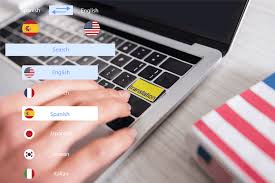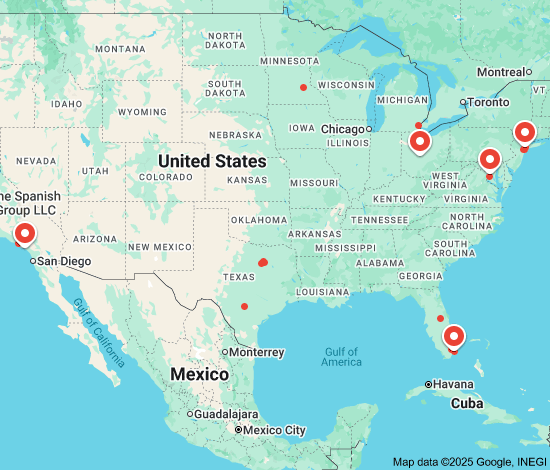Online Translation: Breaking Language Barriers and Connecting Cultures
The internet has revolutionized the way we communicate, work, and live. It has opened up new opportunities for people all over the world to connect and collaborate, regardless of their location or language. However, language barriers still remain a major obstacle to effective communication and understanding. That’s where online translation comes in.
Online translation is the process of using computer software to translate text from one language to another. It has become increasingly popular in recent years, as more and more people seek ways to overcome language barriers and communicate with others in different parts of the world.
There are many benefits to using online translation. First and foremost, it allows people who speak different languages to communicate with each other effectively. This is especially important in today’s globalized world, where businesses often operate across borders and individuals frequently travel for work or leisure.
Online translation also makes it easier for people to access information in different languages. For example, if you’re planning a trip to a foreign country and want to learn more about the local culture or customs, you can use online translation tools to read articles or websites written in that country’s language.
Another advantage of online translation is that it can save time and money compared to traditional translation methods. Hiring a professional translator can be expensive and time-consuming, especially for large documents or projects. Online translation tools can provide fast and accurate translations at a fraction of the cost.
Of course, there are also some drawbacks to online translation. One of the biggest challenges is ensuring that translations are accurate and natural-sounding. While computer software has come a long way in recent years, it still struggles with nuances of language such as idioms or cultural references.
Another issue is privacy concerns. When you use an online translation tool, your text may be stored on servers owned by third-party companies. This raises questions about who has access to your data and how it might be used.
Despite these challenges, online translation has become an essential tool for many people and businesses around the world. As technology continues to evolve, we can expect to see even more advanced and sophisticated translation tools in the years to come.
In conclusion, online translation is a powerful tool that has the potential to break down language barriers and connect people from all over the world. While it’s not perfect, it’s clear that online translation is here to stay and will continue to play an important role in our increasingly globalized society.
Answers to Common Questions About Online Translation Services
- What is the best online translation service?
- How accurate are online translations?
- Is there a free online translation service?
- Are human translations better than machine translations?
- How can I use an online translator to translate a document?
What is the best online translation service?
The best online translation service depends on your needs. Some popular translation services include Google Translate, Microsoft Translator, DeepL Translator, and Reverso. Each of these services offers different features and accuracy levels.
How accurate are online translations?
The accuracy of online translations can vary depending on a variety of factors, such as the quality of the translation software, the complexity of the text being translated, and the languages involved.
In general, online translation tools have come a long way in recent years and can provide accurate translations for simple sentences and phrases. However, they may struggle with more complex texts that contain idioms, cultural references, or technical jargon.
It’s also worth noting that online translation tools are not perfect and may make mistakes from time to time. For this reason, it’s important to use online translations as a starting point rather than relying on them entirely. If accuracy is crucial, it’s best to consult with a professional translator who can ensure that your text is translated correctly.
Additionally, it’s important to keep in mind that online translations can be influenced by regional dialects or variations in language usage. For example, Spanish spoken in Spain may differ slightly from Spanish spoken in Latin America. This means that translations may not always reflect the nuances of a particular dialect or region.
Overall, while online translation tools have improved greatly in recent years and can provide accurate translations for many purposes, it’s important to approach them with some caution and use them as a starting point rather than relying on them entirely.
Is there a free online translation service?
Yes, there are several free online translation services available on the internet. Some of the most popular ones include Google Translate, Bing Translator, DeepL, and Yandex.Translate. These services allow you to translate text from one language to another quickly and easily. However, it’s important to keep in mind that free online translation services may not always be 100% accurate and may struggle with certain nuances of language such as idioms or cultural references. If you need a more accurate or specialized translation, it may be worth considering hiring a professional translator or using a paid translation service.
Are human translations better than machine translations?
Both human translations and machine translations have their own advantages and disadvantages, and which one is better depends on the specific context and requirements of the translation task.
Human translations are generally considered to be more accurate, natural-sounding, and culturally appropriate than machine translations. This is because human translators are able to understand the nuances of language, including idioms, cultural references, and tone. They can also take into account the context of the text being translated, which can be important for conveying meaning accurately.
In addition, human translators are able to use their judgment and expertise to make decisions about how best to translate a text. They can choose between different possible translations based on factors such as clarity, style, and tone.
On the other hand, machine translations have some advantages over human translations. They are much faster and cheaper than human translations, making them a good option for translating large volumes of text quickly or for tasks with a tight deadline or budget. Machine translation tools also have the ability to translate text in multiple languages simultaneously.
However, machine translations often struggle with nuances of language that humans can easily understand. They may produce awkward or unnatural-sounding translations that can lead to confusion or miscommunication. In addition, machine translations may not be culturally appropriate for certain audiences or contexts.
In conclusion, both human translations and machine translations have their strengths and weaknesses. For tasks where accuracy and naturalness are critical (such as legal documents or marketing materials), it’s generally best to use a professional human translator. However, for tasks where speed and cost are more important (such as translating large volumes of technical documents), machine translation may be a viable option.
How can I use an online translator to translate a document?
Using an online translator to translate a document is a simple process. Here are the steps you can follow:
- Choose an online translation tool: There are many online translation tools available, such as Google Translate, DeepL, and Microsoft Translator. Choose one that you are comfortable using.
- Upload your document: Once you have selected your translation tool, upload the document you want to translate. Most online translation tools allow you to upload documents in various formats, such as Word, PDF, or TXT.
- Select the languages: Choose the language of the original document and the language you want it translated into. Make sure that both languages are supported by the translation tool.
- Check and edit the translation: Once the document has been translated, review it carefully to ensure that it accurately conveys the meaning of the original text. Online translation tools may not always capture nuances of language or cultural references correctly, so it’s important to check for errors and make any necessary edits.
- Save and download the translated document: If you’re satisfied with the translation, save it and download it in your preferred format.
It’s important to note that while online translation tools can be helpful for translating simple documents or phrases, they may not always provide accurate translations for more complex texts or technical documents. In these cases, it’s best to consult with a professional translator who can provide high-quality translations tailored to your specific needs.



